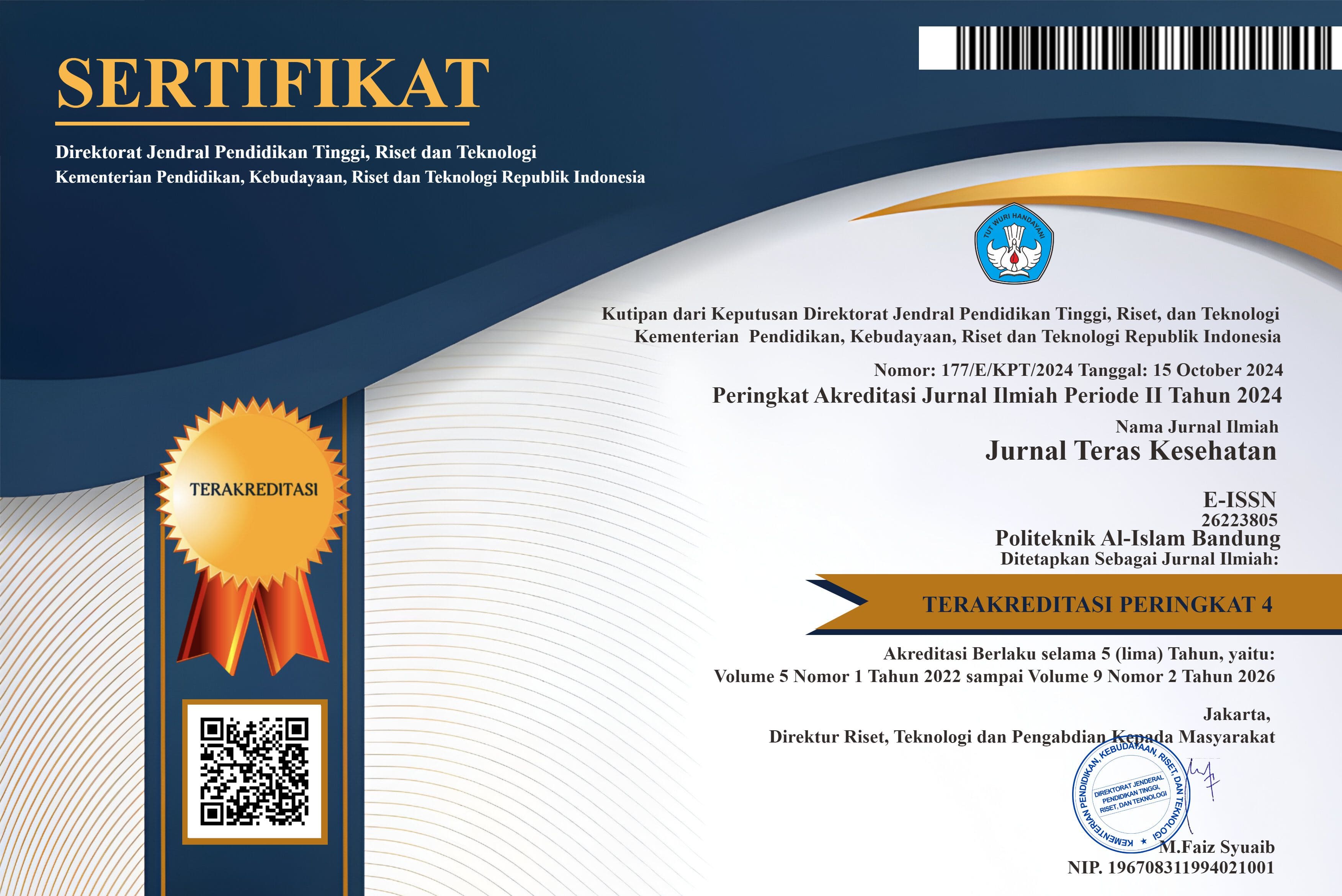ANALISA KETEBALAN KAYU BULIAN TERHADAP DENSITAS FILM SEBAGAI KEMAMPUAN SERAPAN KAYU BULIAN TERHADAP RADIASI
ANALYSIS OF IRONWOOD THICKNESS ON FILM DENSITY AS THE ABSORPTION CAPACITY OF IRONWOOD AGAINST RADIATION
DOI:
https://doi.org/10.38215/jtkes.v8i2.212Keywords:
bulian wood, density, lead absorption, radiationAbstract
In Indonesia, there are many types of wood with potential as radiation shielding materials—specifically, woods possessing a certain degree of hardness that could serve as substitutes for lead (Pb). Bulian wood (Eusideroxylon zwageri), also known as ironwood, is one of the most well-known and strongest species in its native habitat, the Sumatran forest. It is highly durable, resistant to termite and boring insect attacks, impervious to fluctuations in humidity and temperature, and even resistant to seawater. Research into the radiation absorption capacity of Bulian wood is therefore highly necessary, particularly to explore its viability as a substitute for lead metal in radiation shielding applications. This study aims to examine the absorption capacity of Bulian wood with varying thicknesses, which is then analyzed in terms of its density equivalence on film compared to lead sheet objects. The research is quantitative and utilizes an experimental method. It was conducted in the radiography laboratory of the Faculty of Vocational Studies, Baiturrahmah University. The research sample consists of film density measurements at each thickness variation of Bulian wood, corresponding to each level on the step wedge. Data were processed using bivariate analysis.
Downloads
References
Badan Pengawas Tenaga Nuklir. (2013). Peraturan Kepala Badan Pengawas Tenaga Nuklir Nomor 4 Tahun 2013 tentang Proteksi dan Keselamatan Radiasi dalam Pemanfaatan Tenaga Nuklir. Republik Indonesia, 1–29.
Bapeten. (2007). PERATURAN PEMERINTAH REPUBLIK INDONESIA NOMOR 33 TAHUN 2007 TENTANG KESELAMATAN RADIASI PENGION DAN KEAMANAN SUMBER RADIOAKTIF. In Bapeten (Vol. 7, Issue 3). https://peraturan.bpk.go.id/Details/4755/pp-no-33-tahun-2007
Barbhuiya, S., Das, B. B., Norman, P., & Qureshi, T. (2025). A comprehensive review of radiation shielding concrete: Properties, design, evaluation, and applications. Structural Concrete, 26(2), 1809–1855. https://doi.org/10.1002/suco.202400519
Dianasari, T., & Koesyanto, H. (2017). Penerapan Manajemen Keselamatan Radiasi Di Instalasi Radiologi Rumah Sakit. Unnes Journal of Public Health, 6(3), 174. https://doi.org/10.15294/ujph.v6i3.12690
Indrati, R., Siti Masrochah, Edy Susanto, Darmini, Yeti Kartikasari, Rasyid, Emi Murniati, Bagus Abimanyu, & Ardi Soesilo Wibowo. (2017). Proteksi Radiasi Bidang Radiodiagnostik dan Intervensioanl (Vol. 1). //repository.poltekkes-smg.ac.id/index.php?p=show_detail&id=13781&keywords=https://www.google.co.id
Septiyanti, I. (2015). ANALISISDOSISPAPARANRADIASIPADAGENERAL X-RAYIIDIINSTALASIRADIOLOGIRUMAHSAKIT ROEMANIMUHAMMADIYAHSEMARANG. In FAKULTASSAINSDANTEKNOLOGI UNIVERSITASISLAMNEGERIWALISONGO SEMARAN (Vol. 3, Issue 1).
Sutanto, H., & Choirul, A. (2013). PENENTUAN KOEFISIEN SERAPAN KAYU BANGKIRAI (SHOREA LAEVIFOLIA) DAN PERBANDINGANNYA TERHADAP TIMBAL (Pb) SEBAGAI DINDING RUANG RADIOLOGI DIAGNOSTIK. Youngster Physics Journal, 1(5), 161–168.
Syahda, A. S., Milvita, D., & Prasetio, H. (2020). Syahda2020. 9(4), 517–523.
Yufita, E., Bancin, I., Safitri, R., Fisika, J., Matematika, F., & Alam, I. P. (2023). Analisa Pengaruh Faktor Eksposi Pesawat Sinar-X Terhadap Densitas Optik Film Radiografi. Hadron Jurnal Fisika Dan Terapan, 5(01), 9–14.

Downloads
Published
Issue
Section
License
Copyright (c) 2025 Jurnal Teras Kesehatan

This work is licensed under a Creative Commons Attribution-ShareAlike 4.0 International License.
Authors who publish articles in Jurnal Teras Kesehatan agree to the following terms:
- Authors retain copyright of the article and grant the journal right of first publication with the work simultaneously licensed under a CC-BY-SA or The Creative Commons Attribution–ShareAlike License.
- Authors are able to enter into separate, additional contractual arrangements for the non-exclusive distribution of the journal's published version of the work (e.g., post it to an institutional repository or publish it in a book), with an acknowledgment of its initial publication in this journal.
Authors are permitted and encouraged to post their work online (e.g., in institutional repositories or on their website) prior to and during the submission process, as it can lead to productive exchanges, as well as earlier and greater citation of published work (See The Effect of Open Access)










